Breathing in the fresh air, chasing creatures into the creek, gathering bush tucker and getting her hands dirty in Mother Nature’s moist dirt is what Adnyamathanha woman, Sophia Wilton does best.
“My earliest memories are of the bush. Elders shown me what foods you can eat and the ones that are poisonous, how to plant seeds and collect bush tucker…this knowledge has stuck with me for life.”
“If we don’t have our native animals or native bush food, Australia has nothing.”
The Nantawarrina Ranger has been working on country in Nepabunna for the last five years, and believes it’s her duty to protect the land for our future generation.
“If we don’t have our native animals or native bush food, we have nothing.”
A national study has found Indigenous protected areas and rangers now represent Australia’s first point of defence against feral animals, virulent weeds and dangerous wildfires across an area 10 times the size of Tasmania.
The study of the federally-funded Indigenous Protected Area and Indigenous Ranger programs also found the future health of large areas of Australian natural environment is now dependent on the growth of the successful programs.
“These programs really do protect our unique environment which benefits everyone that lives here and calls this place home.”
Chair member, Ned David says this is the most positive investment of public money in Aboriginal and Torres Strait Island affairs.
“It gives people a general sense of empowerment and purpose for working on country. It lets them not only care for country but keep that connection too,” he said.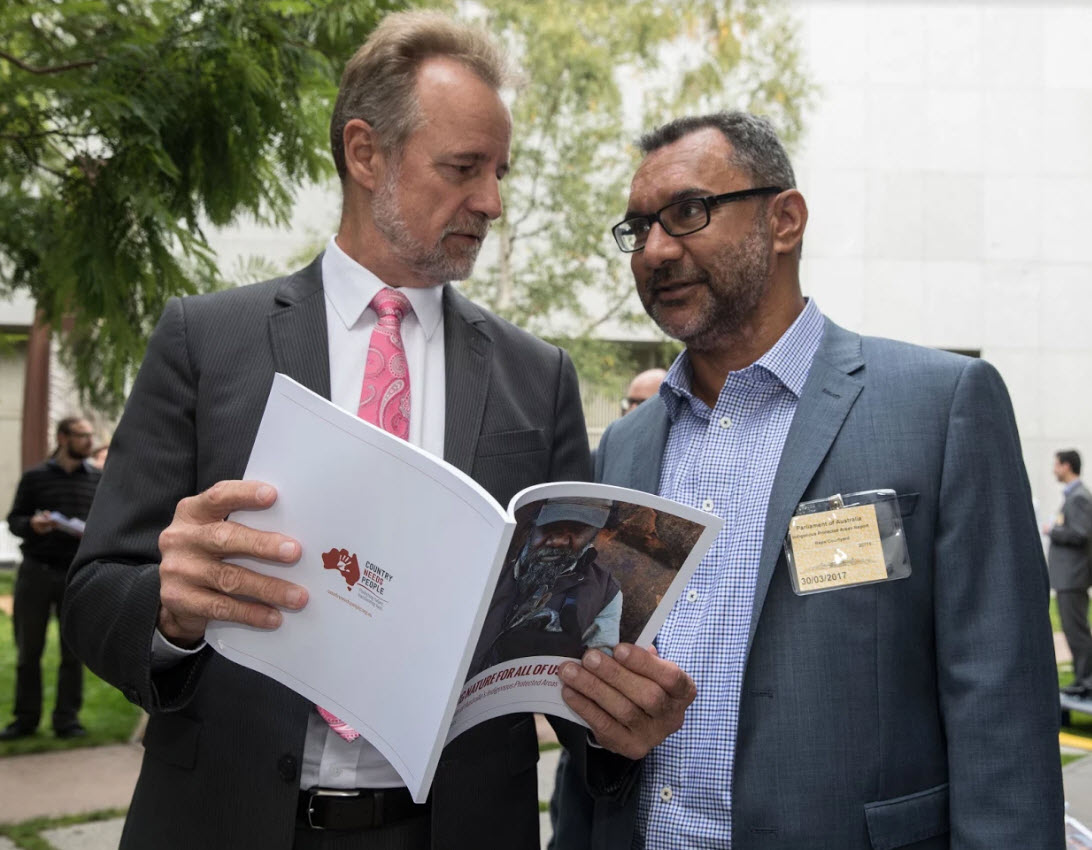 “These programs really do protect our unique environment which benefits everyone that lives here and calls this place home.”
“These programs really do protect our unique environment which benefits everyone that lives here and calls this place home.”

Indigenous Affairs Minister Nigel Scullion reviewing the report with GBK Torres Strait Land and Sea Council chair Ned David Source: NITV News
At parliament on Thursday, Indigenous leaders urged Environment Minister Josh Frydenberg and Indigenous Affairs Minister Nigel Scullion to use the budget to secure jobs and environmental benefits the successful programs create.
Back in the Bush
The Nantawarrina Indigenous protected area was the first one in Australia and has been running 20 years and currently supports 10 Indigenous rangers, all from the one community. The men take care of feral animals while the few women plant native bush foods such as Quandong seeds.
Sophia says they need funding to keep youth engaged and utilise Indigenous people not just as rangers, but local tour guides who can discuss culture and country.
“I grew up here, went to school here, it wasn’t until I was an adult when I moved interstate but something was missing. So I moved back home, and started working as a ranger and now I know, being back out bush - that was what was missing,” she said.
“So many young ones are moving to the city and feeling disconnected like I did so we need to make sure when they return home, they have jobs where they can connect with land and culture ready for them.”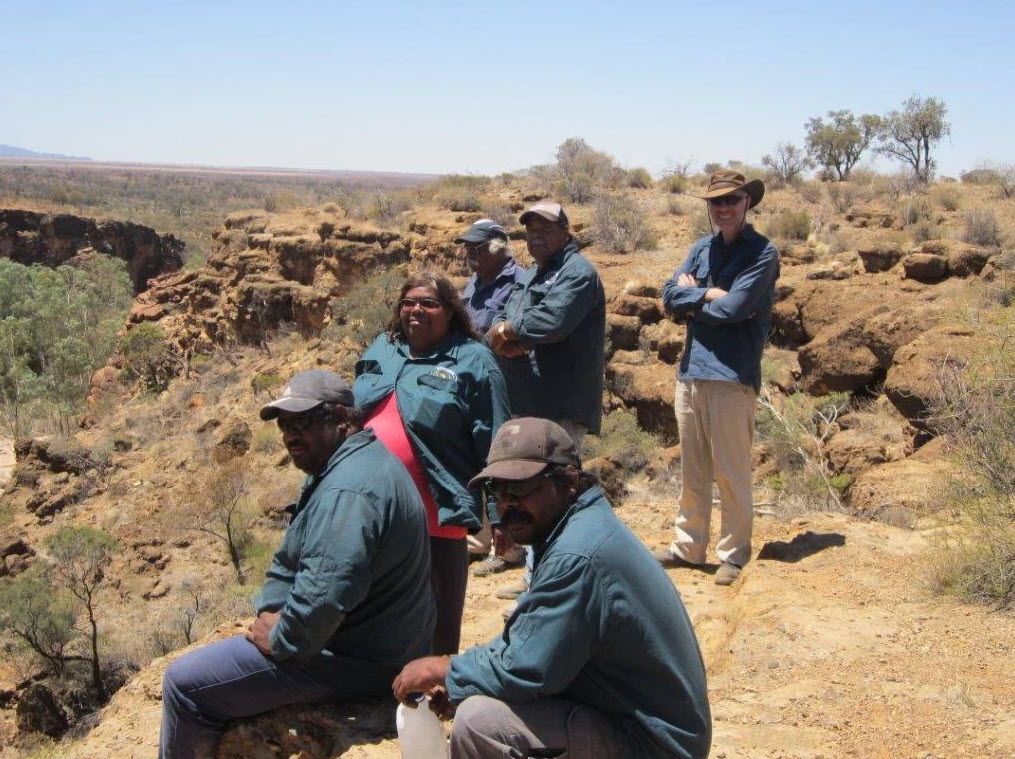

Ian Johnson Snr (Senior Ranger) Kelvin Johnson (Elder) Dulcie Wilton Ian Johnson Jnr Daniel Johnson, Alan Smith - Nantawarrina. Source: NITV News
Digging a miracle
Since a young age, Sophia would spend hours in the bush collecting fossils and rocks. With this particular passion, Adnyamathanha elder Clifford Coulthard decided to bring her on an historic journey.
“Five years ago my cousin set out on a dig and invited me along. We travelled along the dirt and through a creek until he found a cave to dig near. Two metres deep and wide we hit something hard, we hit bones!” she exclaimed.
But it wasn’t the bones and carbon date was tested, when they learnt just how important they are.
“We dug up hafted tools, bones and white gypsum pigments used for cultural traditions from more than 49,000 years ago. We uncovered some of the eldest artefacts ever found ever in South Australia!”
Sophia says its moments like this, ‘discovering history and adding a new chapter to the creation story,’ which makes her job of protecting it worthwhile. 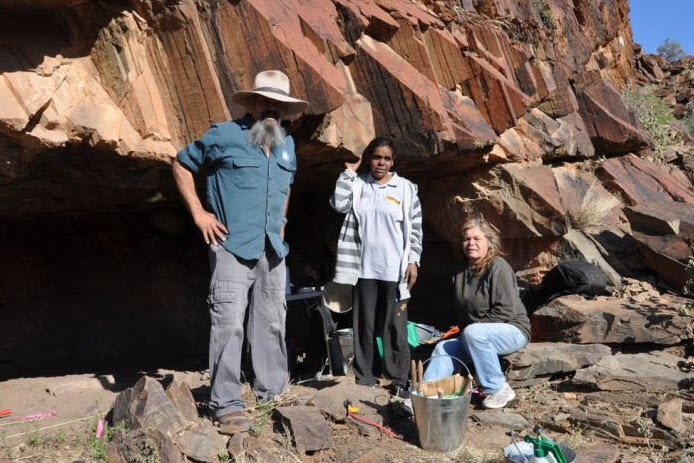

Adnyamathanha elder Clifford Coulthard and cousin Sophia set out on a 5 year dig to discover bones dating more than 40 thousand years old. Source: NITV News
Indigenous programs welcomed
Australian Greens Senator Rachel Siewert has welcomed the finding from the report - Protecting Nature For All Of Us.
Siewert says it’s about protecting our land, culture and country.
“Indigenous rangers and Indigenous Protected Areas have become a key component of ensuring environmental benefits for our country, turning around environmental degradation and species decline,” she said.
“It also keeps alive the traditional knowledge of caring for the land and matches it with science to create the best possible outcome for preservation.”
recently secured an additional $15 million for Indigenous Protected Areas to ensure the program grows and strengthens.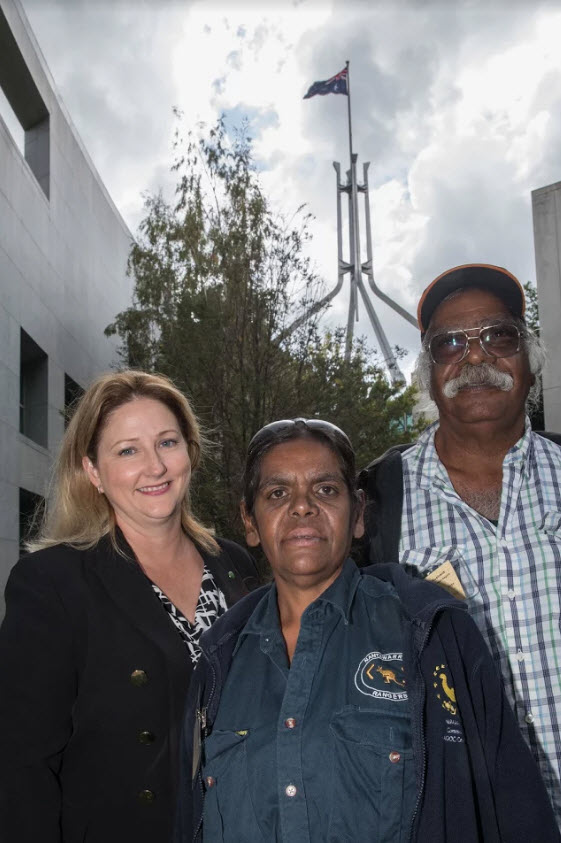 Funding for the existing national network of Indigenous Protected Areas runs out in June 2018, while the Indigenous Ranger program also has an uncertain future, with only a yet-to-be formalised commitment from government of funding to 2020.
Funding for the existing national network of Indigenous Protected Areas runs out in June 2018, while the Indigenous Ranger program also has an uncertain future, with only a yet-to-be formalised commitment from government of funding to 2020.

Rebekha Sharkie MP sponsored the Parliament House event, next to Sophia Wilton and Nantawarrina Senior Ranger Ian Johnson Source: NITV News
Professor Chris Sarra, a member of the, supports growing the successful programs to deliver bigger results for Indigenous people and the nation’s natural environment.
“It is in Australia’s interests to have Indigenous Australians better connected to culture and country, so that all Australians can be more connected to the land and sea we share,” he said.
“This work is an example of working with Indigenous Australia rather than doing things to us, and I’d urge politicians of all stripes to grow Indigenous rangers and Indigenous Protected Areas for the long term.”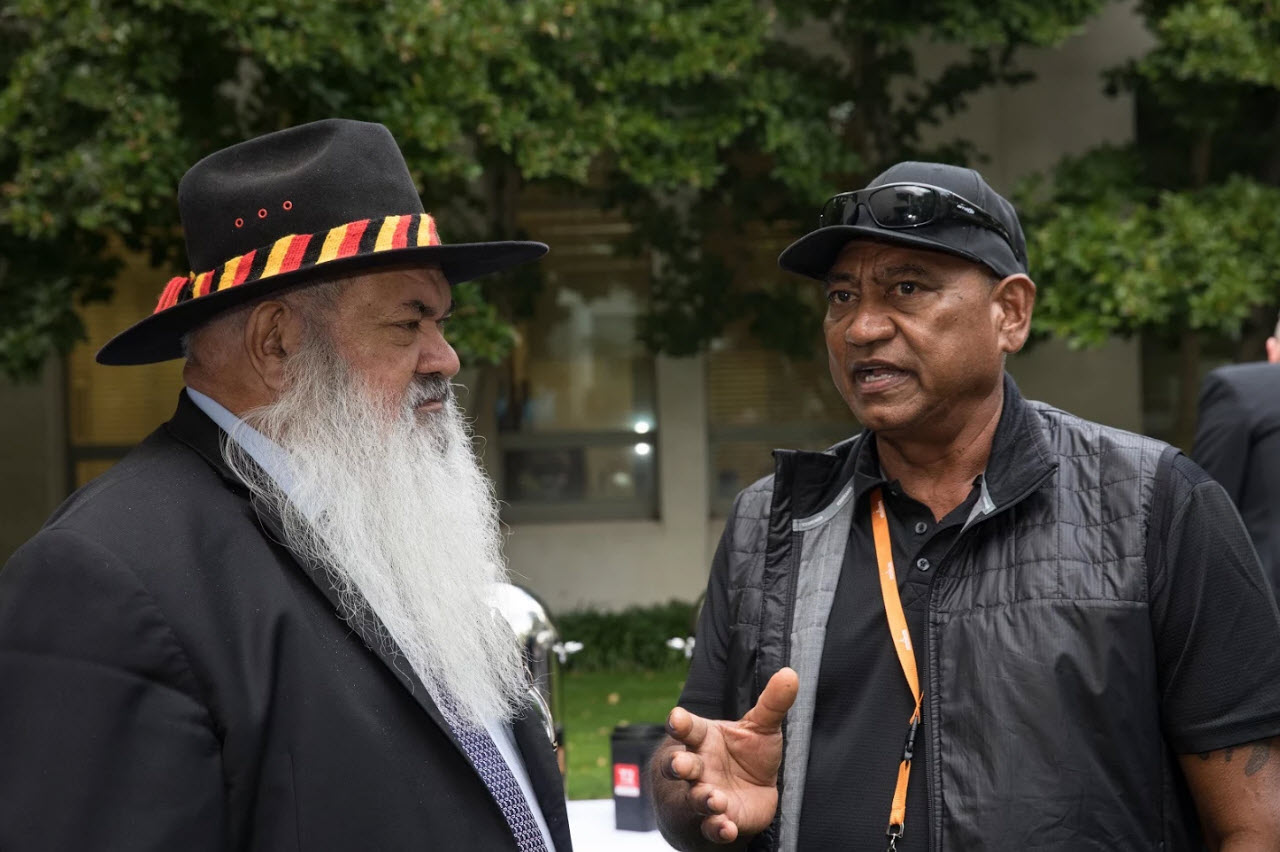

Senator Pat Dodson with KLC ceo Nolan Hunter Source: NITV News
Key study findings
- Indigenous Protected Areas and Indigenous Rangers are now responsible for delivering goals the federal government has set for threatened species and management of the natural environment across almost half of the national reserve estate: IPAs now represent 45% of the national reserve estate.
- Rangers and IPAs are now the frontline national defence against feral animals, noxious weeds, wildfires and native species loss across more than 67 million hectares, or an area 10 times the size of Tasmania.
- There are 800 full-time rangers currently the country’s 75 IPAs - that amounts to just one ranger for an area 50,000 times the size of the MCG.





